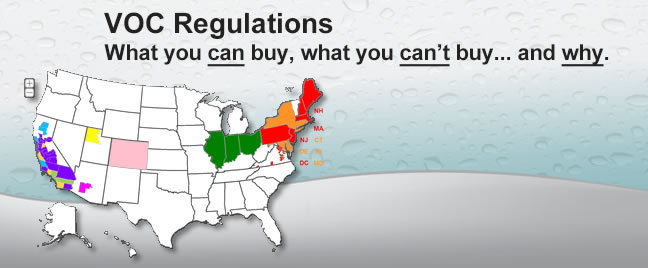Outdoor wooden decks can be a beautiful and functional extension of your home and provide a relaxing place for your family and friends to enjoy. Unfortunately they can also quickly become an eyesore or maintenance nightmare if they are left unprotected.
Decks can be built from a variety of materials including pressure treated pine, cedar and redwood. Some are more resistant to rot than others, but all are vulnerable to the damaging effects of weather. When unprotected wood is exposed to UV sunlight, rain and snow it will soon turn gray and begin to deteriorate. This is especially true for the horizontal surfaces of deck boards which take a direct hit from the rain, snow and sun. Staining and sealing your deck will not only make it beautiful, but also greatly extend the life of your wood.
What we have found is that people sincerely want to protect their wooden investments. Unfortunately, most fail and end up with a costly disaster. Even those who think they have hired a “professional”, many times get no better results. Knowledge, experience and the right products make all the difference.
Deck Cleaning and Preparation
As with all projects, proper preparation is the MOST important step! Before wood can be stained, it MUST be properly cleaned and prepared. For stains to penetrate, adhere and last, the wood must not only be clean, but the pores opened and the pH brought to the correct level.
It is also important to remember that even the best stain or sealer is only as good as the surface it is applied to. Many companies will try to reduce the cost of their services by simply blasting your wood with high pressure water or spraying it with bleach. Although you may get away with these cleaning methods, our years of experience have shown us that using the proper cleaning process will not only produce better results, it will also provide you with the longest stain life possible. Using the proper cleaners will allow you to remove any old deck stains or sealers, kill any mold or mildew, and restore the wood to a better than new appearance.
Step 1:
The Cleaning and Prep Process
- Natural Weathering, Be Patient. We highly recommend that all new wood construction be allowed to naturally weather for a MINIMUM of 6 months, but preferably 1 year. During this time, the pressure treating chemicals and/or natural oils are allowed to naturally escape. These chemicals and oils clog the pores of fresh wood, and greatly reduce penetration and adhesion of your stain. As a rule, when you start to see a slight graying of the wood it is ready to accept stain. Don’t worry! The cleaning and brightening process will make the wood look better than the day it was built!
- Remove any old stains or sealers If you have a deck that has been previously stained or sealed, the first step is to strip these from the surface and pores of the wood. Even if there is no visible stain or sealer on the surface, the pores will still be clogged with sealer and prevent the new stain from bonding. If wood stripper is used, no further cleaning is needed. Proceed to final step (Wood Brightener).
- Clean Thoroughly if Wood Stripper is not needed. The vast majority of outdoor wood restoration projects will begin with this step. A Percarbonate Wood Cleaner will clean mold, dirt, contaminates, sap and tannins from the pores of the wood while restoring the natural color to weathered gray wood fibers. The cleaner is safe, non-toxic and plant safe.
- Neutralize, Brighten and Balance pH. The final step in the cleaning process is an acidic Wood Brightener. After stripping or cleaning, the pH of the wood will be very high and must be neutralized to ensure penetration and adhesion of the stain. Not only does the wood brightener balance the pH and increase penetration of the stain, it does exactly what it’s name implies; It brightens the color of the wood, leaving a beautiful uniform light colored palette for your choice of stain color.
- Sand as needed. Don't worry, it's perfectly normal to have some fuzzy spots, especially if you were stripping an old stain or cleaning agressively. After the deck has dried completely, sand any fuzzy or rough areas with 60-100 grit sandpaper. Be careful not to over sand or use paper finer than 120 grit. This can cause light spots in the final color of your stain.
PRO TIP... If you have access to a floor machine, a black Mal-Grit Brush makes the fastest and most awesome deck floor sander ever!
Deck Staining and Sealing
After proper stripping, cleaning and preparation of the wood, it is now time to protect it with a high quality professional deck stain and sealer.
Our professional grade penetrating oil stains protect your deck from water, moisture and also the damaging UV rays from the sun. The pigments that give the stain its color also work to reflect the UV light away from the wood. A clear sealer will protect the wood from moisture and water, but will quickly allow the wood to turn gray from the ultra-violet light. Our stains also contain both drying and non-drying oils that allow them to not only stain and seal, but also condition the wood to reduce cracking and warping.
Step 2:
The Staining / Sealing Process
Penetrating Oil Deck and Fence Stains - These are our premium stains. These are true oils, that penetrate deep into the wood and leave no film on the surface to peel, flake or wear away. Penetrating oils produce a deep rich color and show the natural grain and texture of the wood. They offer excellent UV, water and mildew protection. This stain offers a long life and very easy maintenance. Since these stains are true oils, a very slight oily residue may be present on the surface for several weeks after application. Penetrating oil stains are never recommended for wooden furniture because of this reason.
Don’t be stingy! - Unlike the film-forming garbage available at most paint and home stores, these professional grade penetrating oil stains work 100% below the surface to stain, condition and protect your wood from within. The key to a great appearance and long life is to completely saturate the surface of the wood, so don’t hold back. Apply in two heavy, saturating coats. With this type of stain it’s almost impossible to get drips and runs! About the only mistake you can make is to apply too little product.
Enjoy and Maintain - When properly applied, these stains will provide easy future maintenance and years of protection from the rain and sun. Unlike other products, when it comes time for maintenance there is no costly stripping involved. Just simply clean and re-stain. Most decks require a maintenance coat approximately every 2 years.






















